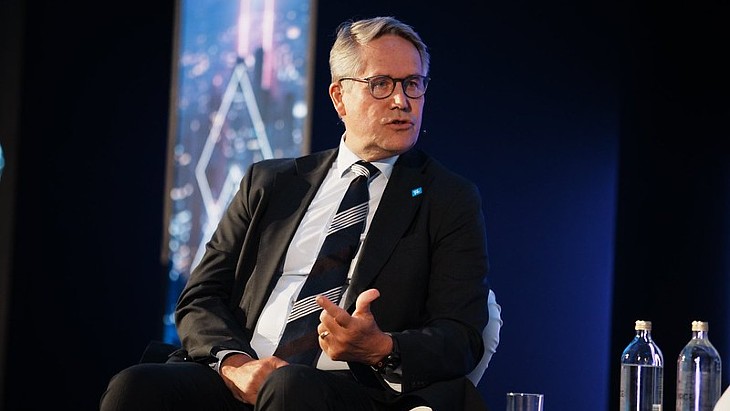The IAEA has now carried out four peer reviews of Japan's efforts towards the decommissioning of Fukushima Daiichi, Christophe Xerri, director of the IAEA Department of Nuclear Energy Division of Nuclear Fuel Cycle and Waste Technology, said. The most recent of these missions, which aim to provide advice and commentary to help improve planning and implementation of decommissioning, while facilitating the wider sharing of good practice and lessons learned, took place in November 2018 and reported to the Japanese authorities in January.
Fukushima Daiichi has moved forward from the "crisis management and emergency" situation it found itself in during and immediately after the events of March 2011, and can now be thought of as having a "stabilised" status, Xerri said. The next move for the site will be to "decommissioning" status.
Since 2015, there have been significant improvements in working conditions, water management and solid waste management at the site, and much progress has been made towards the removal of used fuel and fuel debris from units 1-3, he said. Unit 4 does not contain any used fuel or fuel debris as it had already been defuelled before the accident.
Next steps for the site should include the preparation of an integrated plan to decommission the plant and develop a management plan, drawing on international good practice, he said. Future plans must also feature a strategy for the disposition of water which has been treated to remove radioactive contamination but remains in storage at the site, he said. The IAEA review team felt that such a decision must be taken "urgently" and with the engagement of all stakeholders to ensure the sustainability of decommissioning activities and the effective implementation of other risk reduction measures.
Water deadline
Akira Ono, chief decommissioning officer at Tokyo Electric Power Company, outlined countermeasures that have been taken to reduce the amount of contaminated water being generated at the site. These include paving areas to prevent rainwater seepage, the use of an impermeable 'ice wall' of frozen earth to block the flow of groundwater into reactor buildings, and a steel wall to prevent the potential leakage of contaminated water to the sea. Water that does become contaminated through contact with the damaged reactors and debris is treated by ALPS (Advanced Liquid Processing System) which removes most of the radioactive contamination, with the exception of tritium. This treated water is currently stored on site, but capacity limits will be reached by 2022, Ono said.
The inflow of groundwater and rainwater into buildings at Fukushima Daiichi has been reduced from 440 cubic metres per day in May 2014 and is now around 100 cubic metres per day on average, while the amount of contaminated water generated on site has fallen from 540 cubic metres per day to 170 cubic metres per day over the same period, Tatsuya Shinkawa, director general for nuclear accident disaster response at Japan's Ministry of Economy, Trade and Industry (METI), said. The target is to decrease this to 150 cubic metres per day by 2020.
In 2016, an inter-ministerial subcommittee on handling ALPS treated water was established and is considering five potential disposition options that were previously identified by a task force as technically feasible. These are: injection into the geosphere; discharge to the sea; vapour release; hydrogen release; and underground burial. A sixth option of continued long-term storage is also being considered. The government will decide its future policy on disposition of the treated water after receiving the subcommittee's report and discussions with stakeholders, Shinkawa said. If ALPS treated water was to be released into the environment - "and that is a hypothetical 'if''", he said - it would first need to be re-treated to ensure that radionuclide concentrations were below regulatory limits.
Changing skyline
As well as working to complete the removal of used fuel and fuel debris from units 1-3, preparation work is also underway to dismantle the top half of the exhaust stack that served units 1 and 2, which has some damaged parts, Ono said. This will be carried out by a crane using a remote-controlled dismantlement device.
Meanwhile, a 136 metre long steel barge, known as the Mega-Float, which was formerly used to store contaminated water pending treatment has been moved, he said. This is to reduce the risk of damage that could be caused by the barge in its earlier location in the case of a future tsunami. The float itself is eventually to be repurposed as part of the plant's sea defences.

.JPG)



_33584.jpg)
_82983.jpg)
_34792.jpg)
_16403_79272.jpg)





